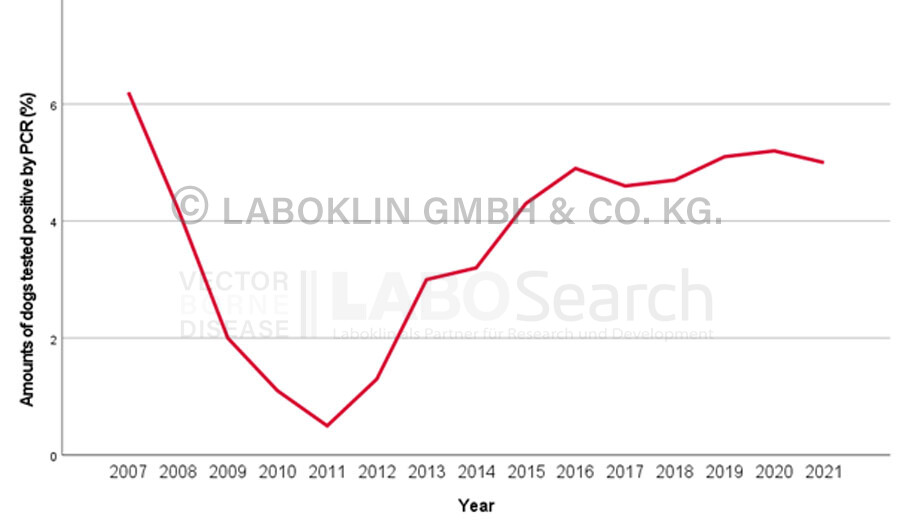- Canine hepatozoonosis: Hepatozoon canis
- Feline hepatozoonosis: Hepatozoon felis, Hepatozoon silvestris, Hepatozoon canis
- Transmission via ticks in Europe:
- Rhipicephalus sanguineus (up to date not seen as endemic in Germany)
- Possibly Ixodes hexagonus (endemic in Germany)
- Infection in dogs due to oral uptake of the tick
- Pathogenesis in cats unclear
- Diaplacentar transmission from bitch to their puppies
- Direct detection methods
- PCR (positive result indicative for acute infection, species differentiation by sequencing)
- Buffy coat smears with detection of gamonts (less sensitive compared to PCR testing)
- Indirect detection methods are not available in routine diagnostics
- Subclinical to severe disease possible
- Fever as the most prominent clinical sign in acute infections
- Anemia and leukocytosis as the most important laboratory diagnostic parameters
at LABOKLIN (Bad Kissingen, Germany)
Species | Timeframe | PCR | IFAT/ELISA |
Dog | 2007-2021 | 4% | - |
Cat | 2007-2020 | 7% | - |
Dog (2007 – 2023, n = 137,736)
Timeframe | PCR | IFAT/ELISA |
2022-2023 | 4.7% | - |
2017-2021 | 5.0% | - |
2012-2016 | 3.6% | - |
2007-2011 | 2.2% | - |
Cat (2007 – 2023, n = 1,809)
Timeframe | PCR | IFAT/ELISA |
2022-2023 | 5.3% | - |
2017-2020 | 6.9% | - |
2012-2016 | 8.3% | - |
2007-2011 | 1.3% | - |
Dog
Annual distribution of dogs tested by PCR for Hepatozoon spp. (2007-2021)

Cats
Annual distribution of cats tested for Hepatozoon spp. by PCR (2007-2021)

Dog
Seasonal distribution of dogs tested positive for Heatozoon spp. by direct testing (PCR) in Germany (2007-2020, %)

Cats
Seasonal distribution of cats tested positive for Heatozoon spp. by direct testing (PCR) in Germany (2007-2020, %)




